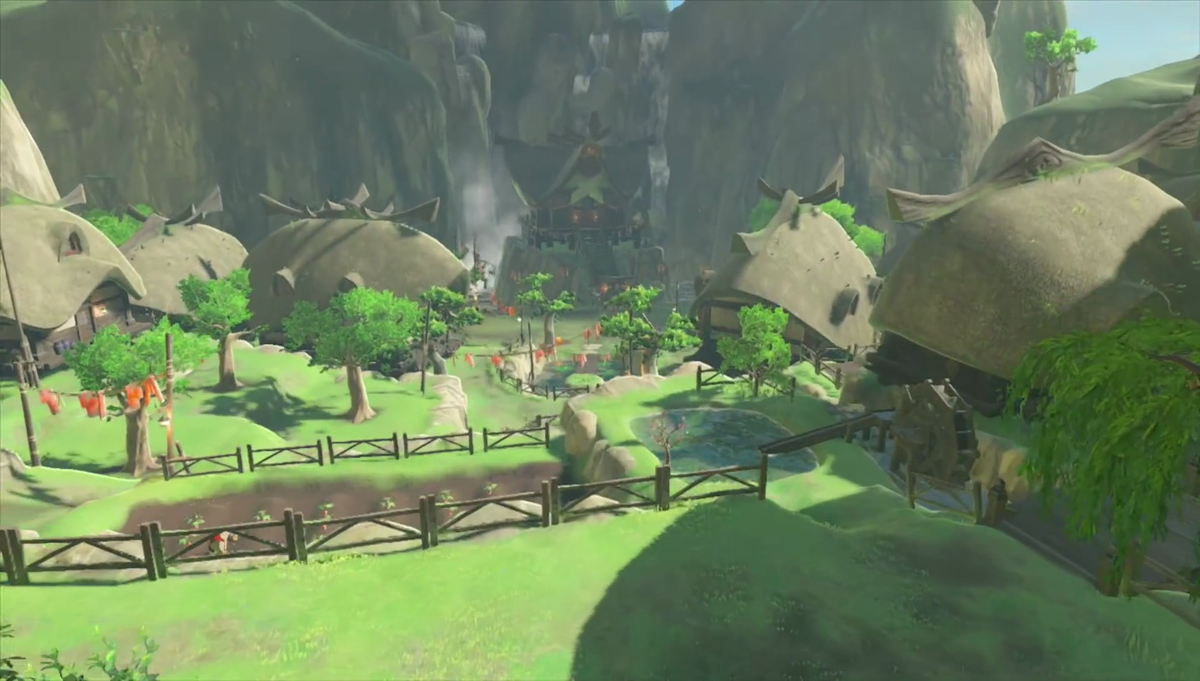Breath of the Wild Designers Reveal Kakariko Village and Korok Forest Were Swapped During Early Development
Posted on September 23 2019 by Kristen G. Rosario

For level designers, making sure every part a game world is placed properly can be a challenging process, especially when that game world is as massive as Hyrule. This is something the level designers behind Breath of the Wild had to deal with on a regular basis when developing the game. The process of completing the landscape design, for instance, was brought up during a recent Nintendo interview with a couple of the game’s designers.
As part of Nintendo’s recruitment process for new designers, Breath of the Wild art director Satoru Takizawa and lead structure designer Manabu Takehara were asked about the process of landscape design and Nintendo’s work culture. Here’s what they had to say:
“How do you go about creating the landscape design while thinking about the gameplay?”
Takizawa: By thinking together with the planning team. Then you add in the programmer to create one landscape together, so that forms a relationship similar to the Triforce. In other words the designer, planner, and programmer form a trinity to produce an idea of singular form.
Takehara: And yet that relationship is a very flat [even] one. At my previous company, the director was at the top, and several leaders were under that, and under them… it was that sort of vertical hierarchical structure of development. But at Nintendo, we don’t just do exactly whatever the director says, but have a flat relationship. And I think because it is such an open structure, it creates a development environment in which even younger members can easily share their opinions.
When answering this question, they brought up a interesting tidbit about two of the areas in the game, Kakariko Village and the Korok Forest:
Takehara: Actually, from the start of development until the middle stage, the positions of Kakariko Village and Korok Forest were reversed from that of the final product — so that Kakariko Village was located where Korok Forest ended up being and Korok Forest was located where Kakariko Village ended up. As development progressed, the story was getting more precise and the game itself was coming together. Along with that, I started to think there was something incongruent about the respective locations of these two villages. When I took that to the landscape leader to discuss with him that I wanted to switch those village locations he was like, “Good point!” and took it to the director right away. I had prepared myself to have that suggestion shot down merely from time constraints, but to my surprise they quite casually said, “That really would be better for numerous design reasons, wouldn’t it? As long as the landscape designer isn’t opposed let’s do it.”
You might say the root of that decision was a sort of greed for making interesting things, but more than that, I felt again at that time what a good and very open work environment it was that allowed for those suggestions to be openly accepted without anyone asking whose idea it was.
Takizawa: Oh yeah, that did happen didn’t it. I recall that switching the location of villages should be quite a workloard from the landscape designer perspective, but somewhere along the line Takehara also became one of those Nintendo employees who are hungry to make interesting things like he was talking about. (laughs)
Takehara: That’s true. (laughs) I also feel like being on the Zelda team has a way of pulling abilities out of use that we didn’t know we had. Zelda is a title with a long history even within Nintendo, and perhaps the cumulative attitude among the BotW team allowed natural absorption of the knowledge and foundation of the thought process for making the games of those who had been involved up to this point.
Takizawa: The story about Kakariko Village and Korok Forest is a drastic example, but you’re right that there was regular repeated discussion among the team about how to make things more interesting/fun in which the question of whose idea was never important, just that good opinions and ideas should be adapted. That’s why I think that it’s greatly nourishing as a game developer to experience that sort of triune development environment of a “flat [even] relationship” instead of just creating data exactly as commanded.
It looks like that there are just some times when swapping locations is for the good of the landscape and for the good of the game overall. I appreciate learning about thought processes behind such decisions.
What do you think of this news? Could you imagine if these two locations were in their original spots? Let us know in the comments below.
Source: Nintendo
Translation by Dark Isatari

Kristen G. Rosario is an Editor who joined Zelda Dungeon back in September of 2015. His current goal is to become a full-time video game journalist, hoping to eventually gain a Bachelor’s Degree in Journalism. While he pursues that dream, he not only takes care of his adorable dachshund Angel, but also helps run a YouTube channel with his brother. The Zelda series is a quest he hasn’t fully completed yet, but hopes to get there one day.



